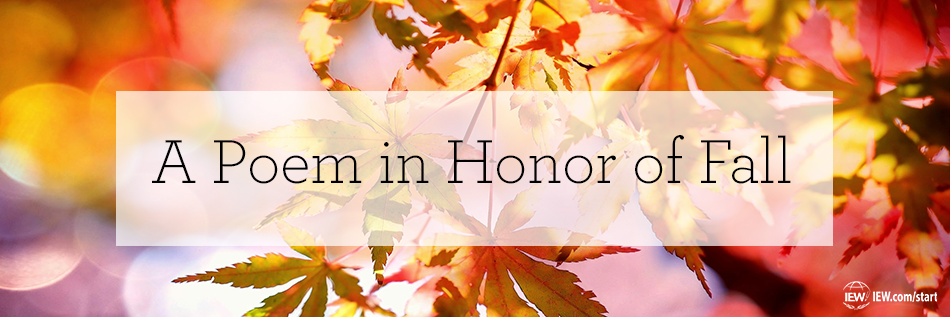
Fall is here! The days of summer, with its hot sun, refreshing dips in the pool, and long days of languid rest, are done. With fall comes school activities, cooler temperatures, and a return to business. Before you get too busy, though, take a moment to read this poem written by John Keats, a quintessential Romantic poet of the early nineteenth century. Slow down and savor the words. They may inspire you to linger a little longer into autumn!
To Autumn
by John Keats
Season of mists and mellow fruitfulness,
Close bosom-friend of the maturing sun;
Conspiring with him how to load and bless
With fruit the vines that round the thatch-eves run;
To bend with apples the moss'd cottage-trees,
And fill all fruit with ripeness to the core;
To swell the gourd, and plump the hazel shells
With a sweet kernel; to set budding more,
And still more, later flowers for the bees,
Until they think warm days will never cease,
For summer has o'er-brimm'd their clammy cells.Who hath not seen thee oft amid thy store?
Sometimes whoever seeks abroad may find
Thee sitting careless on a granary floor,
Thy hair soft-lifted by the winnowing wind;
Or on a half-reap'd furrow sound asleep,
Drows'd with the fume of poppies, while thy hook
Spares the next swath and all its twined flowers:
And sometimes like a gleaner thou dost keep
Steady thy laden head across a brook;
Or by a cyder-press, with patient look,
Thou watchest the last oozings hours by hours.Where are the songs of spring? Ay, Where are they?
Think not of them, thou hast thy music too,—
While barred clouds bloom the soft-dying day,
And touch the stubble-plains with rosy hue;
Then in a wailful choir the small gnats mourn
Among the river sallows, borne aloft
Or sinking as the light wind lives or dies;
And full-grown lambs loud bleat from hilly bourn;
Hedge-crickets sing; and now with treble soft
The red-breast whistles from a garden-croft;
And gathering swallows twitter in the skies.
Romanticism was an intellectual movement that encompassed both art and literature in the late eighteenth to mid-nineteenth century. It celebrated nature, inspiration, individuality, subjectivity, and imagination. Emotion was elevated above reason, and introspection was celebrated. Out of this movement many lasting written works were completed, including Shelley’s Frankenstein, Blake’s Songs of Innocence and Experience, and Charlotte Brontë’s Jane Eyre.
